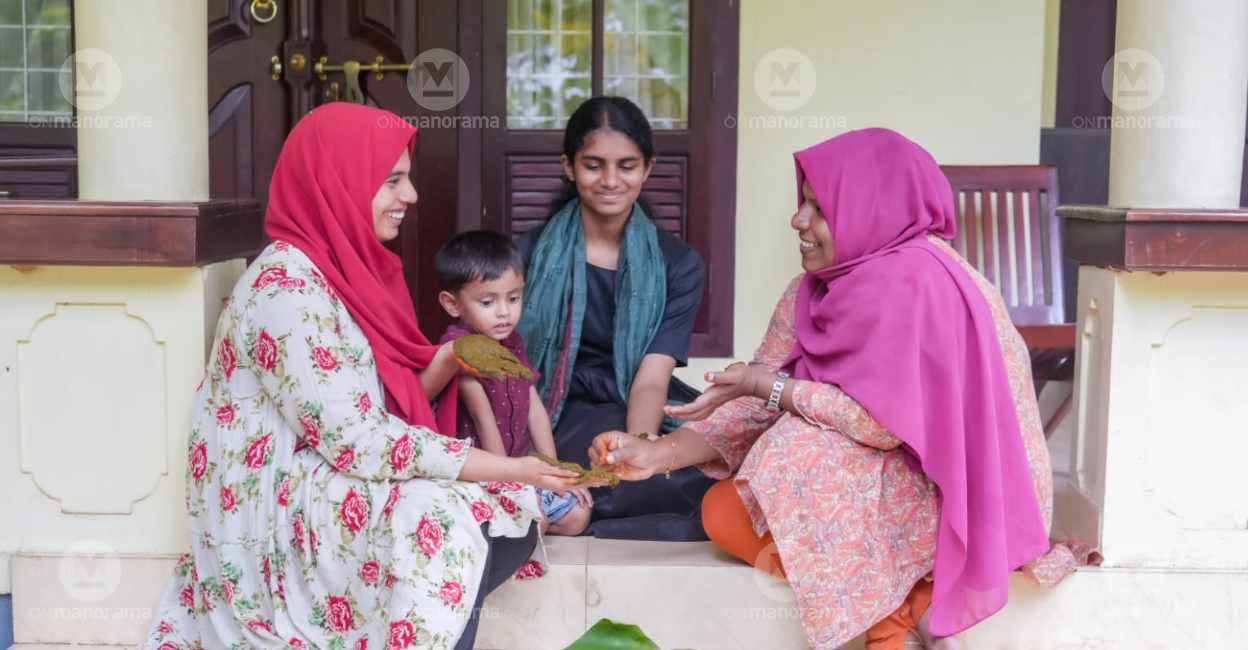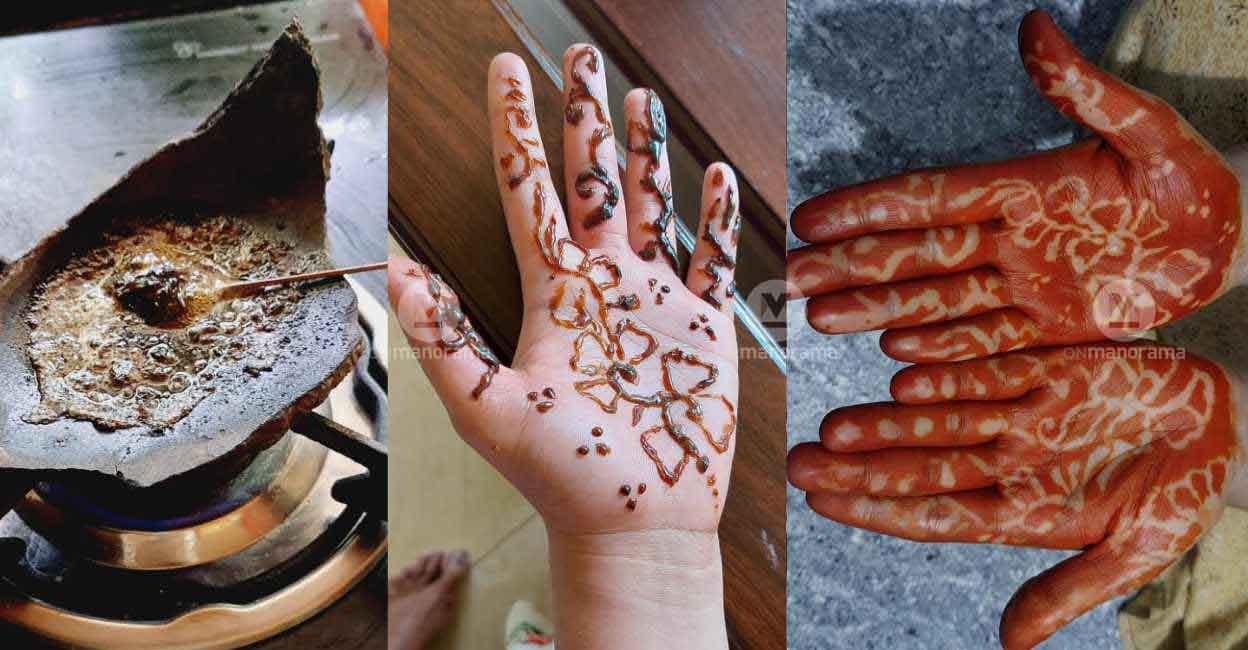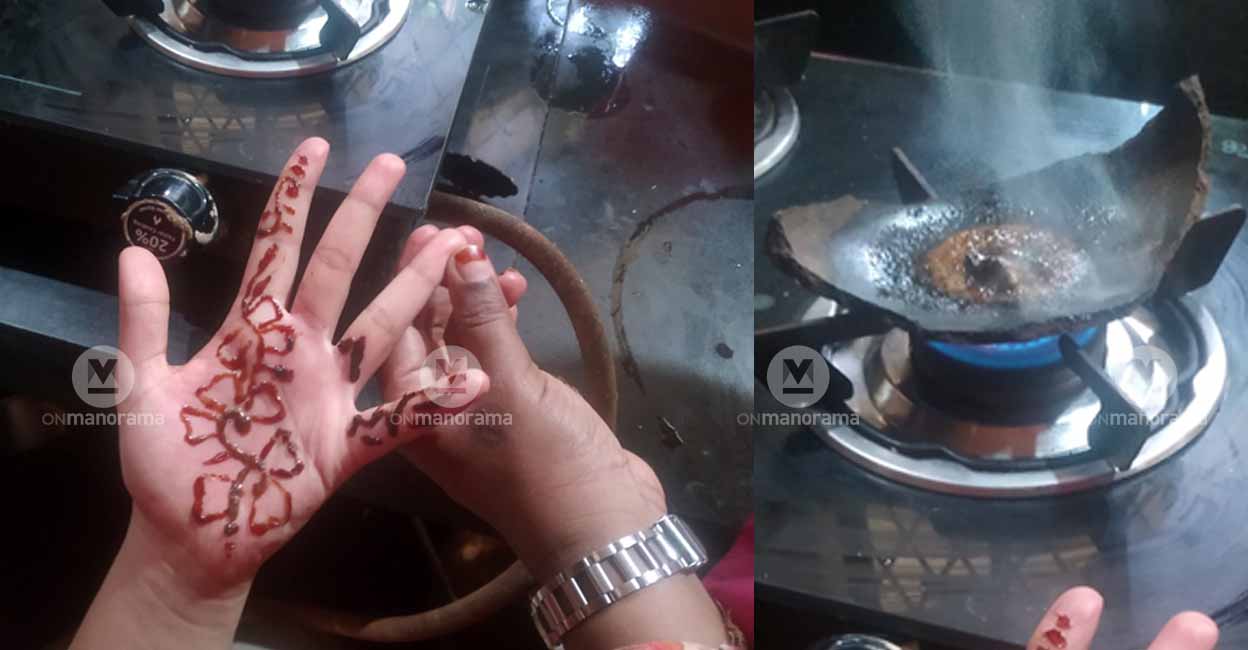Reviving traditional mehendi drawing using jackfruit sap stencils | Bakrid Special

Mail This Article
On every Eid eve, after finishing preparations for the extravagant feast of the following day, Subaida retrieves the dried jackfruit sap from her storeroom and melts it on the stove. This tradition not only helps her create a natural stencil for the distinctive reverse mehendi design but also evokes a multitude of sentimental memories.
Subaida keeps the stove on a low flame and melts the jackfruit sap/latex. Once the molten liquid is ready, Subaida draws designs on her palms with it. "It has a mild burning sensation. But now the whole process brings back childhood memories of doing it along with cousins and girls in the neighbourhood on the eve of Bakrid," says Kamassery Pulikkal Subaida, hailing from Kodiyathur, Kozhikode.

The dried jackfruit sap acts as a natural stencil. The ground mehendi is applied on the palm as per the design. It's then left overnight to set in. In the morning, when the dried mehendi is removed, white flowers, vines, and dotted calligraphy would bloom on the red palm.
"This kind of gathering made our Eid evenings more exciting and lively. The fun with cousins and friends, the burning sensation from drawing with molten jackfruit sap, and the aroma of mehendi... Every eve of Eid was filled with these rich feelings," adds Subaida while preparing her magic memory potion.
Despite the availability of easy-to-use stencils and mehendi tubes, Subaida continues to choose this aged method as it is a ritualistic invocation of memories for her. "Yes, this might be strange to the new generation of kids. But seeing my designs, last year my nieces wanted a similar one. I was delighted to see these kids opting for the traditional method. Nowadays, nobody collects the jackfruit sap and keeps it for a year. But every year, I store the sap at my home and share it with others in the neighbourhood. I even grind the mehendi leaves using a traditional stone grinder," adds Subaida.

"I have not seen anybody wearing this kind of mehendi, except Umma (mother)," says Murshida, Subaida's daughter-in-law. This year, Murshida teamed up with Shareena, a high school teacher and friend, to try out Subaida's reversed mehendi design. But even for Shareena, a well-known mehendi designer, this technique was new. The duo, with the help of Subaida, prepared the mehendi and drew beautiful designs on Murshida's palm. "Next time I will use this technique for brides. It will be interesting to see natural 'mylanchi' (mehendi) designed with a reversed style," says Shareena.
However, for teenager Isha PP, it was a 'painful experience'. She could not tolerate the hot sap and had to opt for the normal mehendi. Even Grandma Fathima's cheering could not change her decision.

Replaced by mehendi cones
It was a popular traditional technique of mehendi wearing among the Malabar Muslims which had existed until the early 90s. The idea behind the technique is that the sticky sap will keep the designed lines white, locking the colour of the mehendi outside. Earlier, every household would have dried jackfruit sap on a stick hooked to the roofs, remembered Subaida.
She recollected that, whether it's Eid al Adha or Eid ul Fitr, Muslim girls and women from neighbouring families would gather at one place and make a temporary traditional stove using stones to melt the sap. And the mehendi drawing used to be a collective process enjoyed by women and children. "It was an exciting experience for us. We used to gather at the nearby school ground on Eid eve, after Maghrib prayer, to wear mehendi. We stayed there until midnight drawing mehendi, chatting, and playing different games," says Sajna Moonnukantathil. Sajna's classmate Shabna felt sorry that such gatherings disappeared gradually.
Entry of mylanchi cones (mehendi tubes) also led to the fading away of this method, points out Puthankunn Kurudankanty Shakkeela from Wayanad. "It was our relatives from Mysore that introduced us to mehendi tubes. It became popular soon as it's easy to design and gives the result sooner. But it's always safe to use natural mehendi or one should be sure about the safety of the ready-made product," says Shakkeela."

